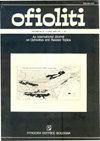塞尔维亚Vardar地区Kopaonik侵入杂岩地质地球化学特征
IF 1.3
4区 地球科学
Q2 GEOLOGY
引用次数: 12
摘要
在第纳尔—希腊带的瓦尔达尔带,出现了几个年龄跨越早白垩世至中新世的侵入岩浆体。其中一个主体是科帕奥尼克侵入杂岩,它在塞尔维亚南部出现,面积约90平方公里。本文讨论了科帕奥尼克侵入杂岩的地质和地球化学特征,以便在碰撞后岩浆活动的框架内对其进行解释,这些岩浆活动是迪纳尔-希腊带更内部的区域。科帕奥尼克侵入杂岩体具有穹状构造特征,由3个同心岩浆相组成,包括石英闪长岩、花岗闪长岩和石英二长岩等岩型,它们之间的过渡是渐进的、持续的。所收集的资料表明,科帕奥尼克花岗岩类为i型,具有高钾钙碱性亲和力。石英闪长岩与碳酸盐寄主岩的浅层相互作用使侵入杂岩的成因部分被湮没,影响了Ca-Sr含量和87Sr/86Sr比值。然而,收集到的地质、岩石学和石油化学资料表明,这三种相具有很强的成因关系。Rb-Sr整体黑云母年龄提供了最小侵位年龄31.5±0.3 Ma(早渐新世)。Kopaonik侵入岩属于一个连续的晚古近世-中中新世岩浆带,从东阿尔卑斯到土耳其西北部,发育于整个巴尔干半岛,与欧亚大陆下新特提斯洋板块的俯冲有关。在此框架下,科帕奥尼克岩浆岩的来源可以确定在一个受俯冲交代作用强烈改造的地幔楔中。本文章由计算机程序翻译,如有差异,请以英文原文为准。
Geological and geochemical features of the Kopaonik intrusive complex (Vardar zone, Serbia)
In the Vardar Zone of the Dinaric-Hellenic Belt, several intrusive magmatic bodies with an age spanning from Early Cretaceous to Miocene occur. One of the main bodies is represented by the Kopaonik Intrusive Complex that crops out in Southern Serbia in an area of about 90 km2. This paper deals with the geological and geochemical features of the Kopaonik Intrusive Complex, in order to provide useful constraints for its interpretation in the frame of the post-collisional magmatic activity that characterized the more internal zone of the Dinaric-Hellenic Belt.
The Kopaonik intrusive complex is characterized by a dome-like structure consisting of three concentric magmatic facies, including lithotypes ranging from qtz-diorites to granodiorites and qtz-monzonites, with a gradual and continuing transition between them. The collected data indicate that the Kopaonik granitoids are I-type, with high-K calc-alkaline affinity. The origin of the intrusive complex is partially obliterated by shallow interaction between the qtzdioritic rocks and carbonate host rocks, affecting Ca-Sr contents and 87Sr/86Sr ratios. Nevertheless, the collected geological, petrographical and petrochemical data suggest a strong genetic relationship of the three facies. A minimum emplacement age of 31.5±0.3 Ma (Early Oligocene) is provided by Rb-Sr wholerock biotite age.
The Kopaonik intrusives belong to a continuous Late Paleogene-Middle Miocene magmatic belt developed throughout the Balkan Peninsula from the Eastern Alps to Northwestern Turkey, and linked with subduction of the NeoTethys oceanic plate under the Eurasia. In this framework, the source of the Kopaonik magmatic rocks can be identified in a mantle wedge strongly modified by subduction-induced metasomatism.
求助全文
通过发布文献求助,成功后即可免费获取论文全文。
去求助
来源期刊

Ofioliti
地学-地质学
CiteScore
2.40
自引率
7.70%
发文量
1
期刊介绍:
Since 1976, Ofioliti provides an international forum for original contributions and reviews in the field of the geodynamics, petrology, geochemistry, biostratigraphy, stratigraphy, tectonics and paleogeography applied to ophiolitic terrains and modern oceanic lithosphere, including their sedimentary cover. Studies of topics such as geodynamics of the mantle, the evolution of orogens including ophiolites and paleoceanography are also welcome
 求助内容:
求助内容: 应助结果提醒方式:
应助结果提醒方式:


